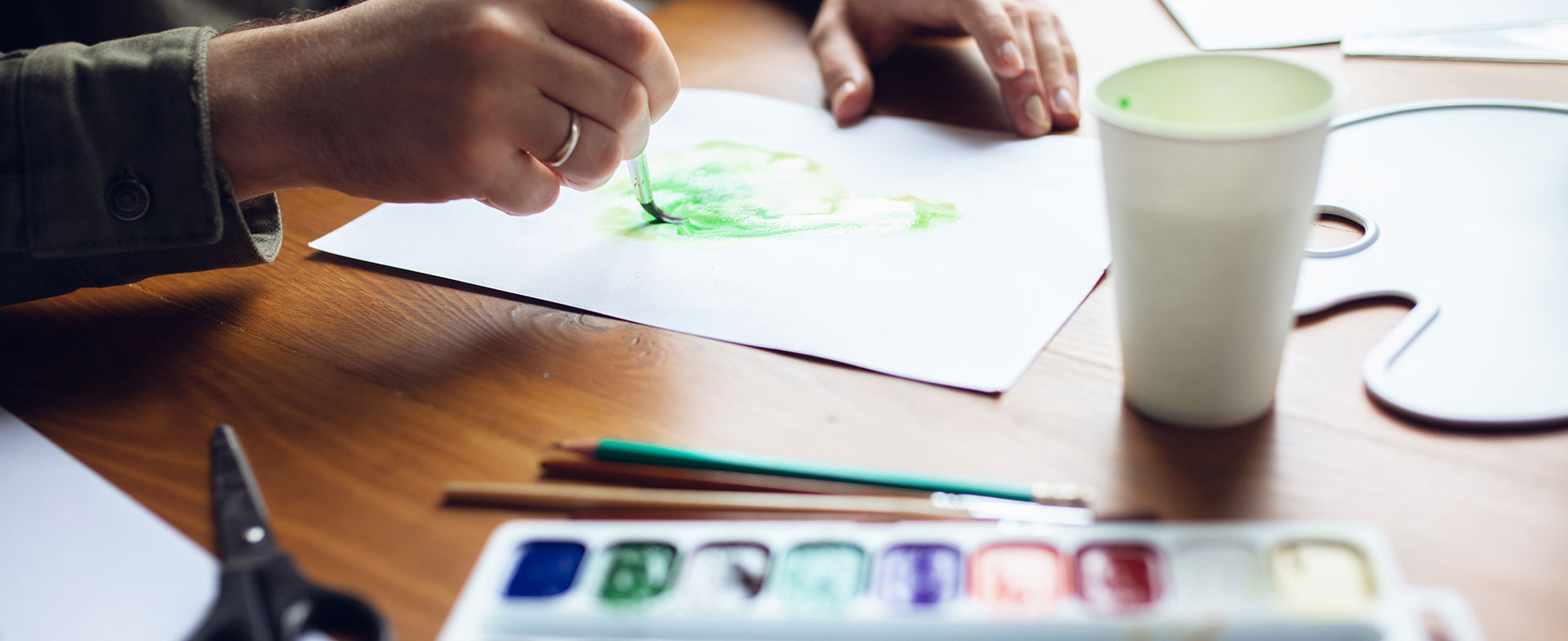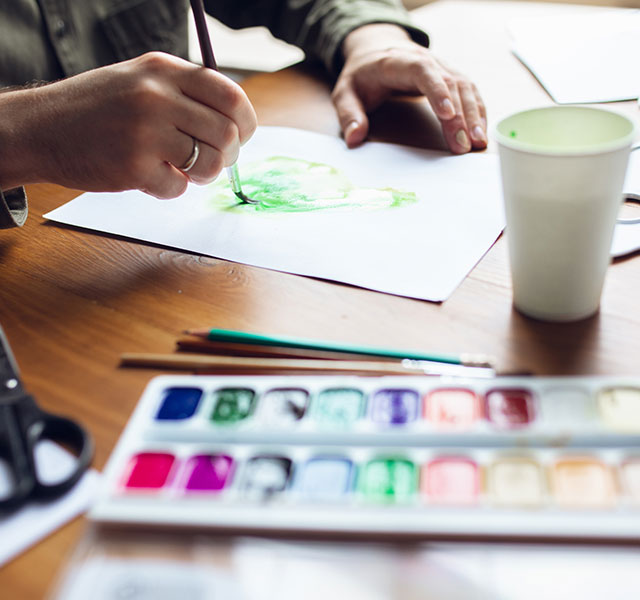When dealing with the complex emotions that come with a cancer diagnosis, don’t underestimate the healing power of art. It can be a constructive way to express yourself, channel your frustration and anger, and calm your mind. There’s even a particular type of counseling dedicated to it, simply called art therapy.
“By using different art processes—drawing, painting and ceramics, for example—you can better understand and dive more deeply into your thoughts and feelings,” says Mallory Montgomery, ATR-BC, a board-certified art therapist with Henry Ford Health. “While we do talk in art therapy, sometimes words are limiting, so this is another way to express yourself. We use colors, lines and symbols to express internal states.”
With each art therapy session, you may tackle a different issue: You can contemplate how you’re feeling about becoming someone who is being taken care of instead of caring for others. You may be grieving for your former life, your former self, your former body.
“Cancer puts so much of someone’s life on hold, so we do a lot of grief work in art therapy,” says Montgomery. “We explore who they were before the diagnosis, and who is this new person that they need to love.”
Art therapy can decrease stress and increase mood.
“When you create art, it lowers your cortisol (or stress) level and can actually change the chemicals in your brain,” Montgomery says. “Most people find it has a strong, calming effect. There are many studies that prove the power of art.”
Art therapy also offers an opportunity to learn new skills, build confidence and explore self-esteem. “Patients who use art therapy can see an increase in mood, along with a decrease in sadness and anxiety. They may feel more in control of their life and diagnosis,” she says.
And you don’t have to be an artist to benefit from art therapy. If you’re unsure of yourself, Montgomery recommends starting with something small, like a coloring sheet.
Art therapy can help reduce physical pain from cancer treatments.
“We use a technique called body mapping,” Montgomery explains. “Using a sheet of paper with an outline of a human figure on it, you draw representations of your pain. Is the pain sharp or dull? Is it hot or cold? Are you numb? What colors and shapes can you associate with it? Can you draw a picture of what your body feels like?”
This is externalizing your pain. After that, you destroy and transform your pain by drawing, on top of the original, what it will feel like when your cancer treatment is over.
“The psychological effect of externalizing how you feel, followed by an opportunity to take the pain and turn it into something pleasant, has a strong psychological effect on pain,” Montgomery says. “If, on a scale of 1 to 10, your pain was at a 7 at the start of your session, you may feel a reduction to a 5 or 6 after the session.”
Art therapy can help family members cope, too.
Close family members who are also struggling with a loved one’s cancer diagnosis can also benefit from art therapy. “Art therapy can help them grapple with the difficult emotions and changes they’re dealing with,” she says. “No one is immune from the healing power of art.”
Learn more about the art therapy program at Henry Ford Health. To make an appointment with a cancer specialist, visit henryford.com/cancer or call (888) 777-4167.
Mallory Montgomery, ATR-BC, is a board-certified art therapist with Henry Ford Health. She works with cancer patients at Henry Ford Health.



